Medicine Crow, Peelatchi-waaxpáash, born around 1848 in the area of the Musselshell, member of the New Made Lodge Acirārī’o clan and of the Lumpwood (Mara'xi'ce Knobbed Sticks) warrior society. According to his grandson, tribal historian and storyteller Joe Medicine Crow, Medicine Crow’s father, a prominent headman, was called Jointed Together and his mother was One Buffalo Calf. He wasn’t yet born when his father died, probably in the smallpox epidemic; his mother later married the noted medicine man Look At The Bulls Penis (better known as Sees The Living Bull or Bull Goes Hunting), who became an important figure in Medicine Crow’s youth. It is said that he looked for a vision at least three times; the fourth time, when he was eighteen, he fasted for 4 days and 3 nights; the fourth night, he had the vision of a white man who told him that he came from the land of the rising sun, and that many others like were coming to the Crow land and take possession of it. He then advised Medicine Crow of not opposing the newcomers, the White Eyes, and exhorted him to “deal with them wisely, and all would have turned out all right”. It is said that in other visions Medicine Crow foresaw the passing away of the buffalo, the building of the Big Horn Southern Railroad (“something black with round legs puffing smoke and pulling boxlike objects behind it”) and of planes (“wagons flying in the sky”). His medicine were the hawk and the eagle (even if, according to some reports, he had to “borrow” them, as he didn’t manage to get them in a personal vision).
He joined his first war party at 15 and, for the following nineteen years, he got the honors required to obtain chieftainship. He is said to have counted 3 first coups, wrestled away 5 weapons from an enemy, stolen 2 horses cutting the halter rope, and commanded 10 successful war parties. In tribal warfare, he made his most famous exploits against the Lakotas (sometimes together with his friend, River Crow Two Leggings): in 1874, he and his party annihilated 7 Lakotas entrenched in a deep washout; the Lakotas had already killed several Crows when Medicine Crow jumped with his horse in the washout, panicking the enemies who fled and were quickly dispatched.
In 1876, Medicine Crow, together with other 176 Crows joined general George Crook’s troops and fought in the Battle of the Rosebud (according to Joe Medicine Crow, it was Medicine Crow to “carry the pipe” for the Crow scouts, while Plenty Coups told Frank Linderman that he himself led the Crow warriors – Alligator Stands Up). Lt. John Bourke thus remembered the Crow leader “…Medicine Crow, the Crow chief, looked like a devil in his war bonnet of feathers, furs and buffalo horns”.
In 1877 Medicine Crow joined again the US troops in the fights against the Nez Percés. During a battle, a Nez Percé challenged him to combat and shot Medicine Crow’s horse under him. Medicine Crow went on his charge, jumping from side to side until he pounced on the Nez Percé, wrestling his weapon away from him and then allowing him to re join his comrades (Crow used to be allies of the Nez Percés).
In 1880 Medicine Crow, together with a delegation composed of other five tribesmen went to Washington, D.C. to discuss settlements in the Crow agency, the selling of Crow lands and the eventual division of the land into individual farms. Medicine Crow later settled in Lodge Grass Creek, taking up farming and playing an important role during the 1887 Sword Bearer incident when, together with Pretty Eagle and Plenty Coups, he managed to keep the tribe united. During the early 1900s, he opposed firmly the selling of the Crow lands and in 1890 he was appointed as tribal judge.
Medicine Crow died in 1920 and is buried on the Valley of Chieftains (in the Little Big Horn area). He is said to have taken 6 wives; from the last one, Medicine Sheep, he had 4 sons (Cassie, Hugh, Leo and Chester). Leo Medicine Crow fathered Chief Joseph Medicine Crow, who’s now 96 and considered one of the official tribal historians.
— Jinlian

There’s an interesting page on Medicine Crow by Joe Medicine Crow at the LBH College website (mostly based on the same author's book From the Heart of Crow Country): http://lib.lbhc.edu/index.php?q=node/70
"Medicine Crow was a warrior from the time he first went on the warpath at the age of fifteen until his last battle in 1877. He attained chieftaincy about 1870 at the age of twenty-two, and from then on he set the pace for aspiring young warriors of his people.
Until his death in 1920, at the age of seventy-two, he was a "reservation chief," concerned with helping the Crow tribe "learn to live in the ways of the white man" as soon and as efficiently as possible. He went to see the Great Father in Washington many times on behalf of his people.”
— Jinlian

Medicine Crow's individual photographs taken by C. Bell in Washington, 1880:
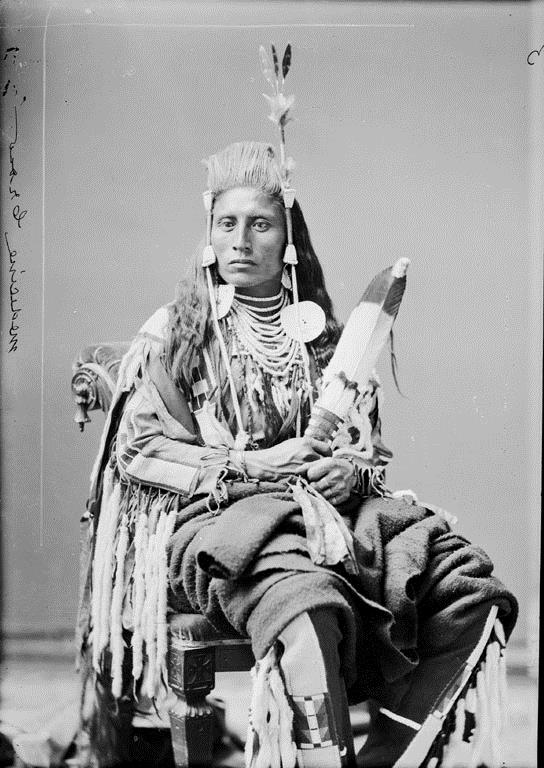
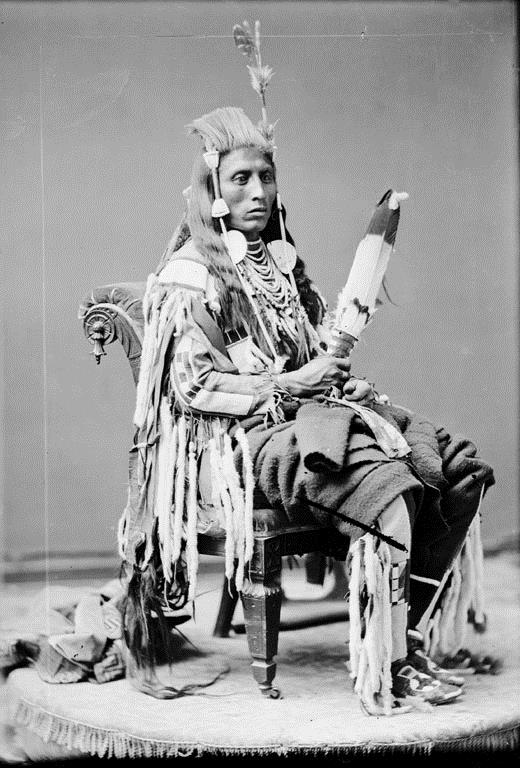
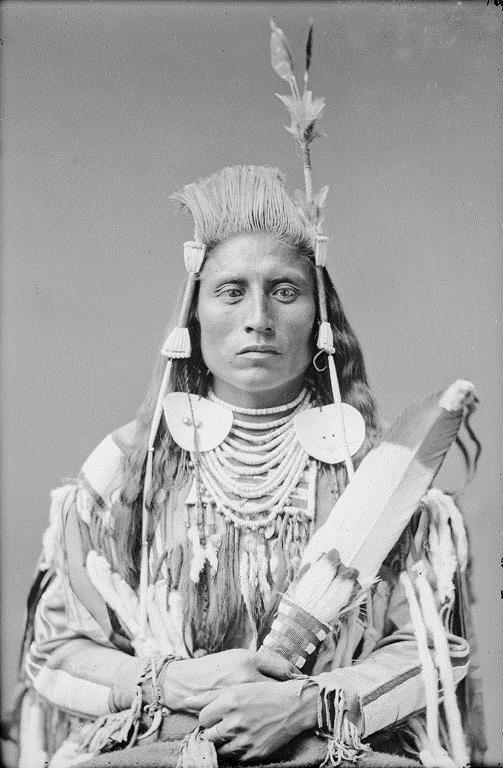
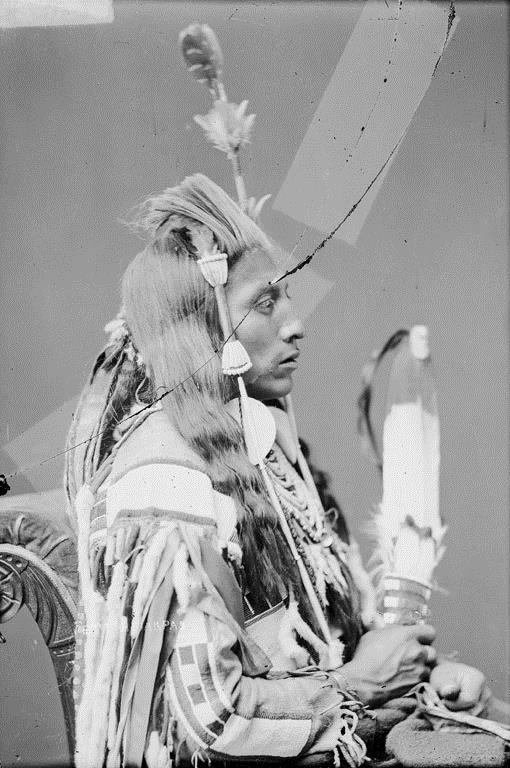
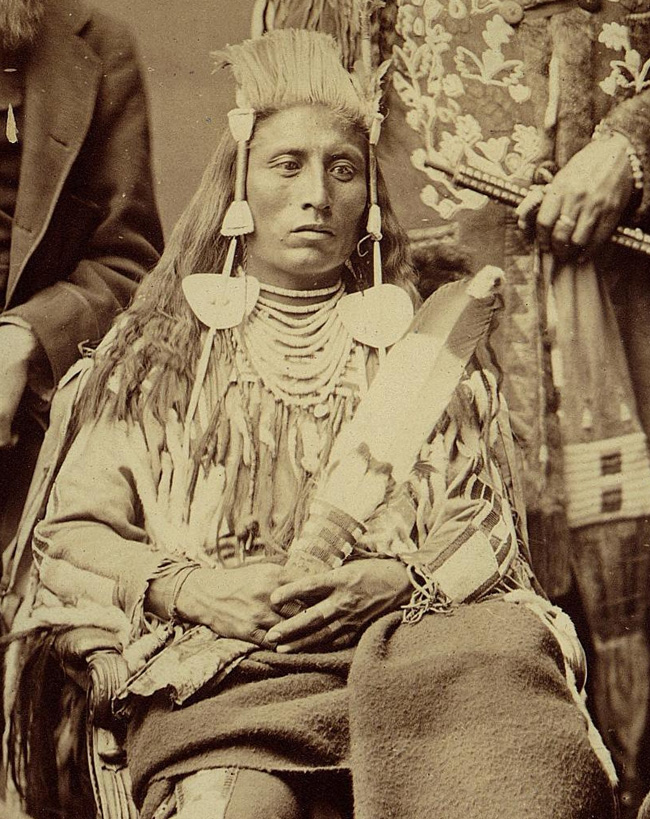
Close-up of Medicine Crow from a group photo.
— Jinlian

Medicine Crow portraits by E. Curtis, 1908:
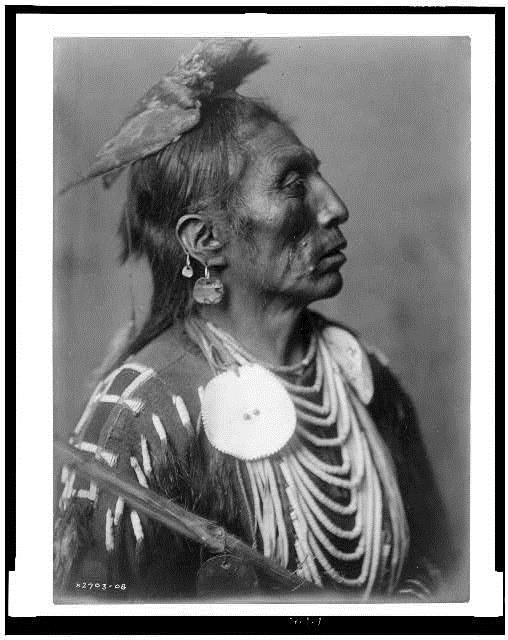
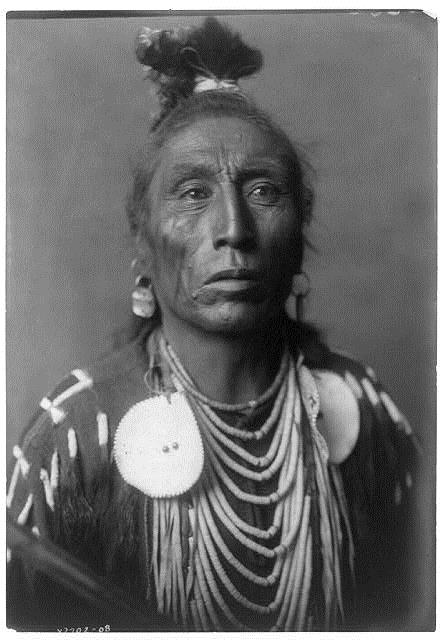
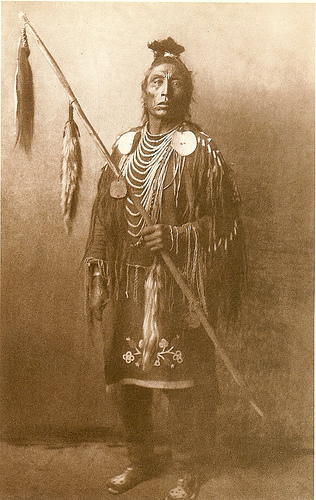
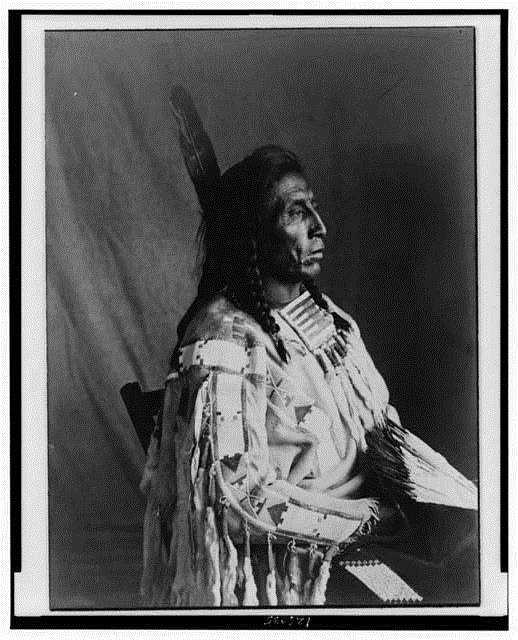
Photo by R. Throssel between 1908 and 1913:
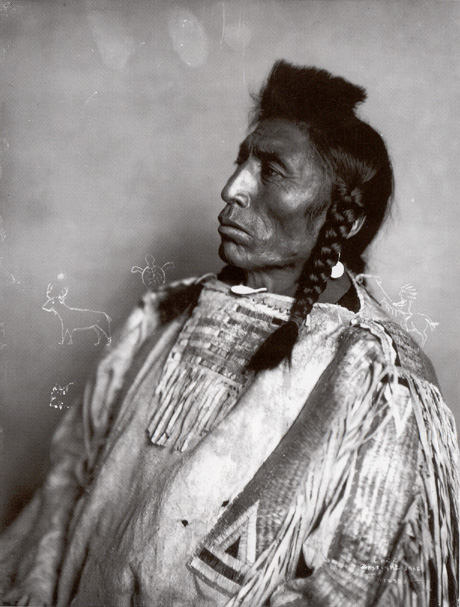
Group photo by Curtis (about 1910). Medicine Crow is second from the left:
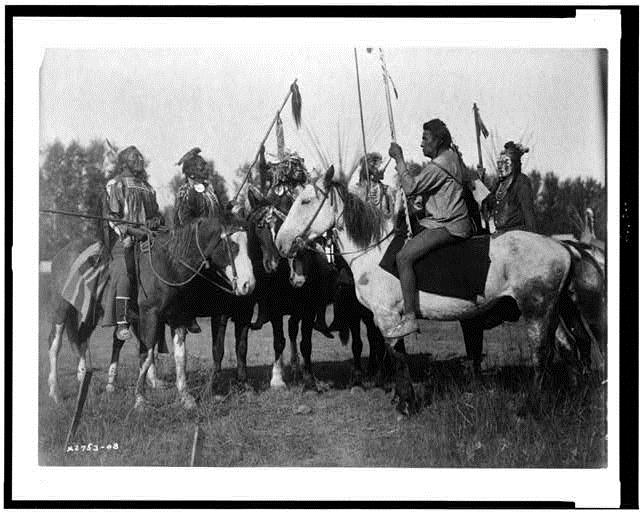
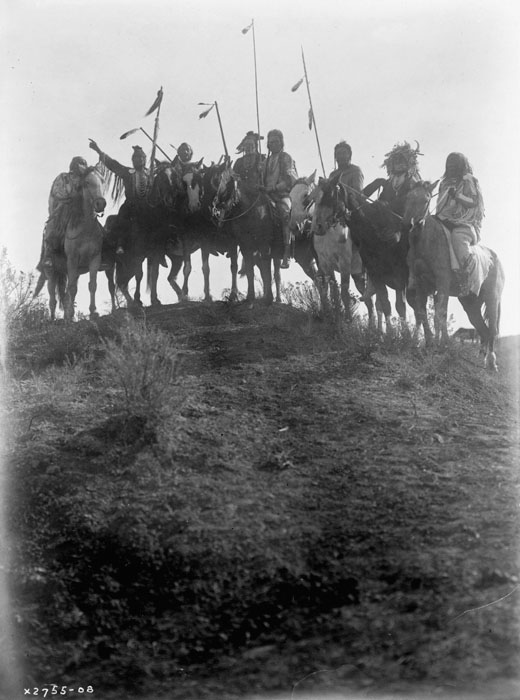
Again, a group photo by Curtis. Medicine Crow is second from the left:
— Jinlian

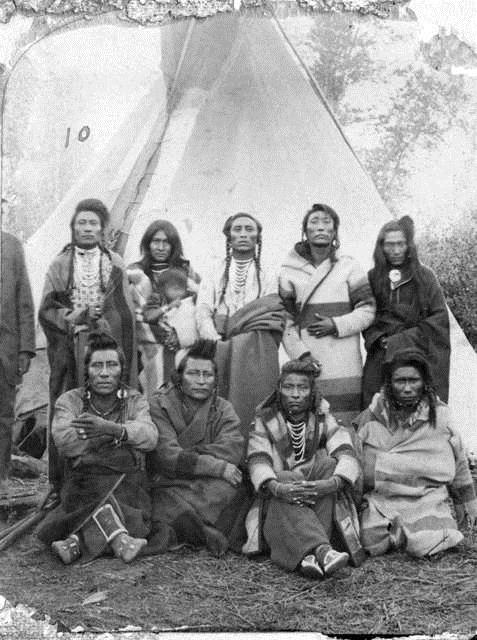
Group photo by Haynes, late 1870s-early 1880s. Medicine Crow is standing, third from the left.
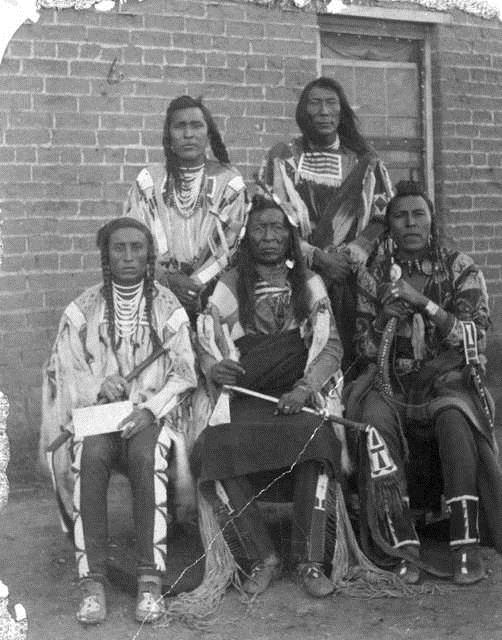
Haynes (?), same period. Medicine Crow sits first from the left.
— Jinlian

Two portraits made in 1913, Washington, D.C., by De Lancey Gill:
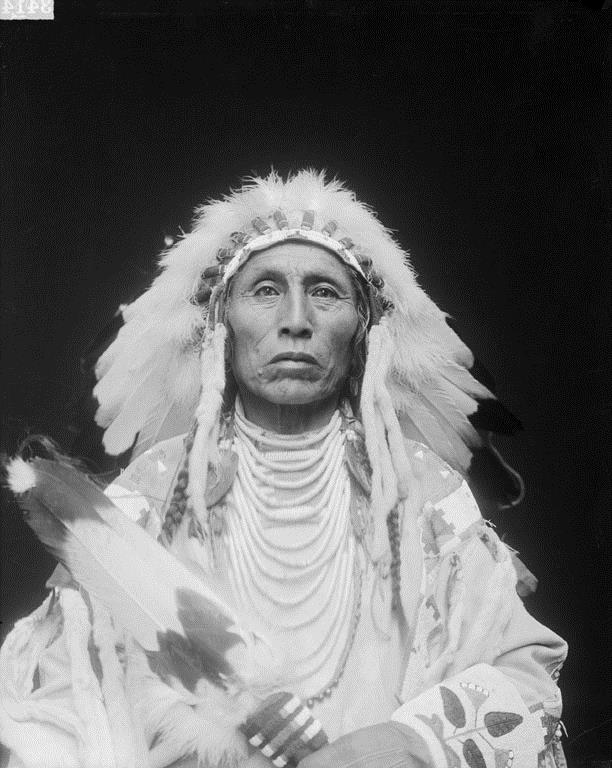
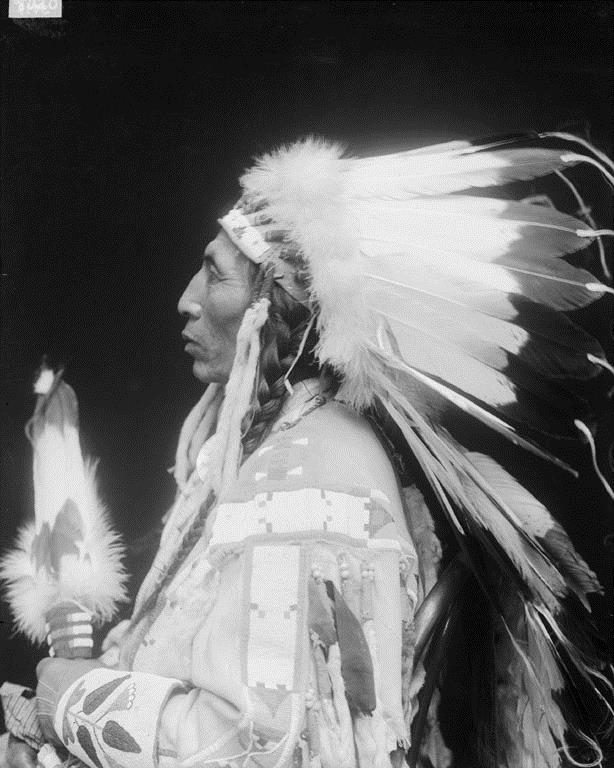
— Jinlian

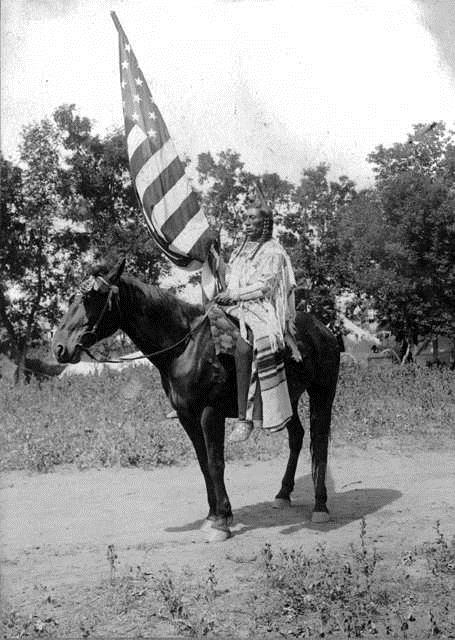
Medicine Crow about 1910.
— Jinlian

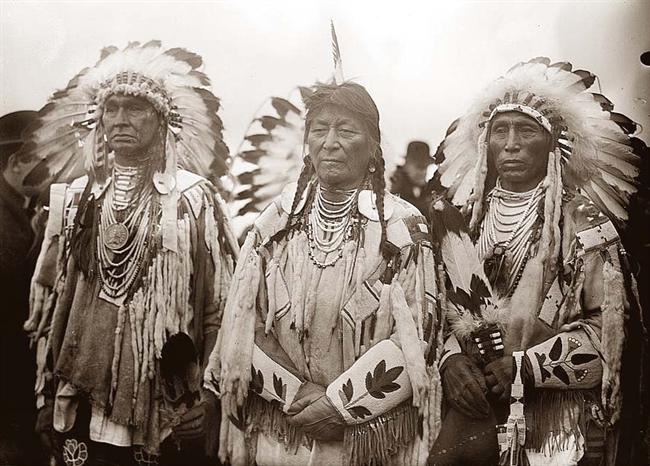
Photograph from the Wanamaker expedition, 1913. From left: Medicine Crow, Plenty Coups, White Man Runs Him.
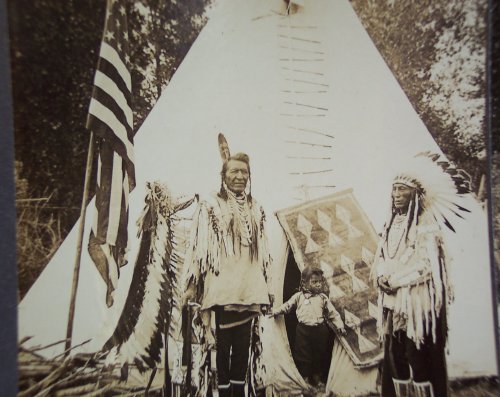
Standing from left: Two Leggings, unidentified, Medicine Crow.
—Henri

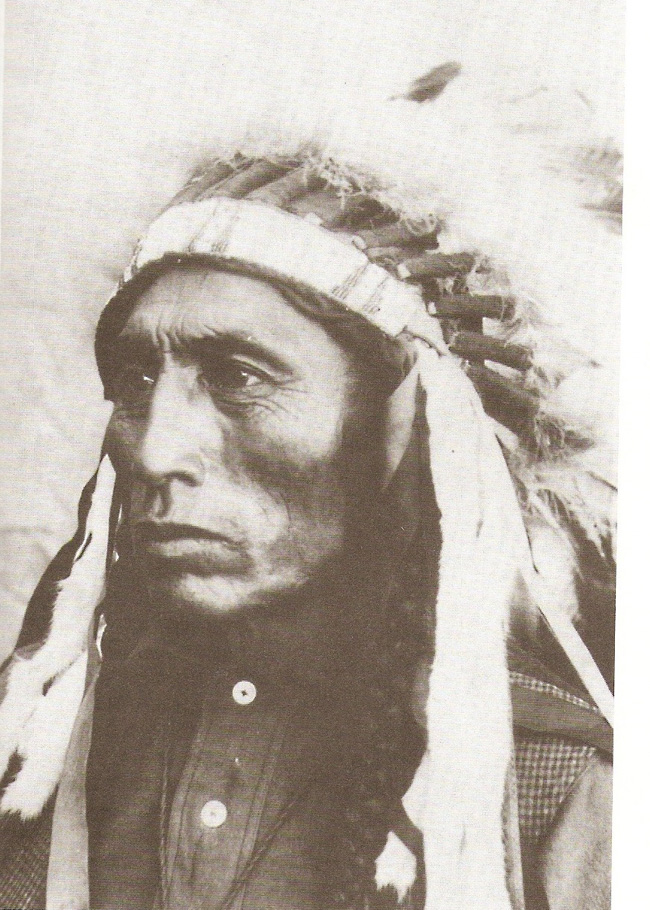
Medicine Crow between 1910 and 1920.
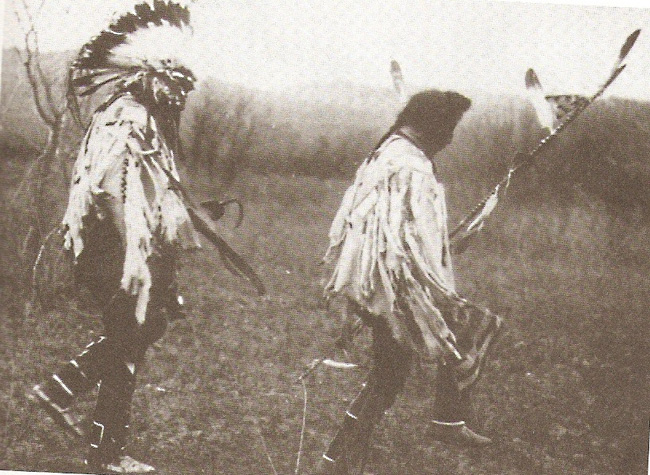
Medicine Crow (right) and Shows-a-Fish (left) leading a dance.
— Jinlian

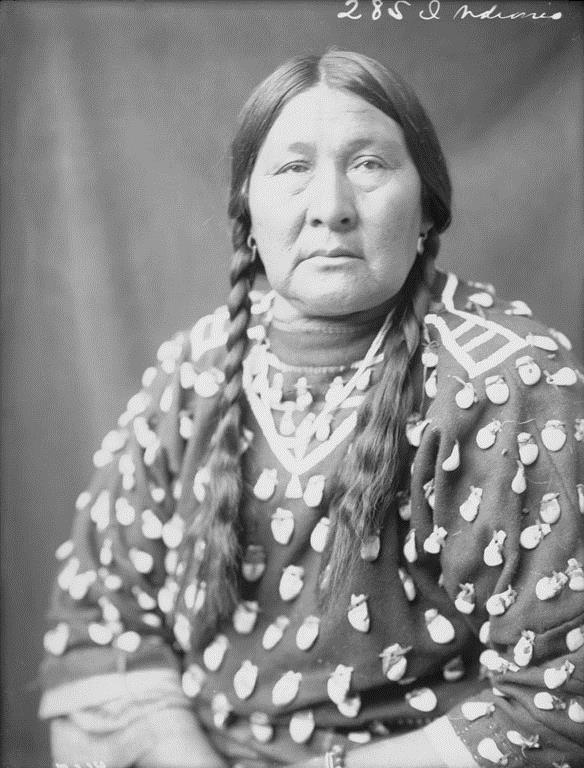
Medicine Crow's wife, Sacred Mountain Sheep, who was also sister to White Man Runs Him, photographed by R. Throssel between 1908 and 1913.
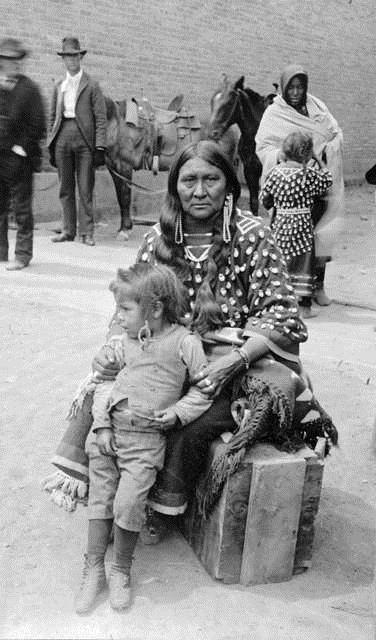
Mrs. Medicine Crow and child about 1900 by L. Bostwick.
— Jinlian

Some more photos of Medicine Crow:
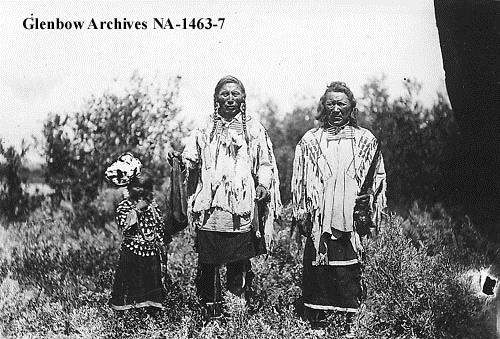
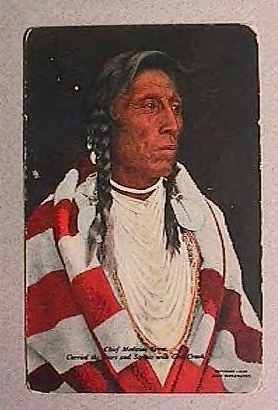
A postcard from the Wanamaker series (1913).
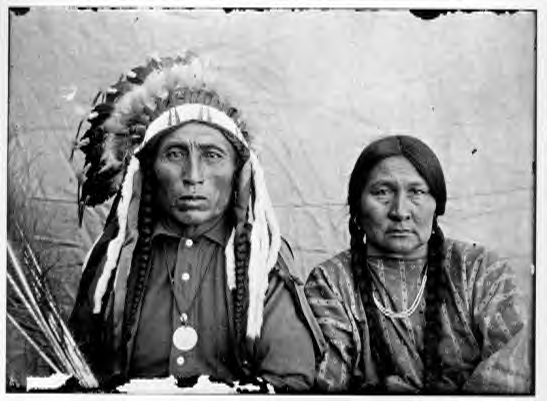
Medicine Crow and Sacred Mountain Sheep, by F. Miller (1908-13)
— Dietmar

Medicine Crow as remembered by E. Burbank:
"Chief Medicine Crow was one of the most remarkable of the Indian artists. On one occasion he made a trip to Washington, D. C. While there he visited the museum. On his return to the reservation he painted from memory pictures of practically all of the mounted animals he saw in the museum. His drawings were surprisingly accurate."
Burbank’s portrait of Medicine Crow:
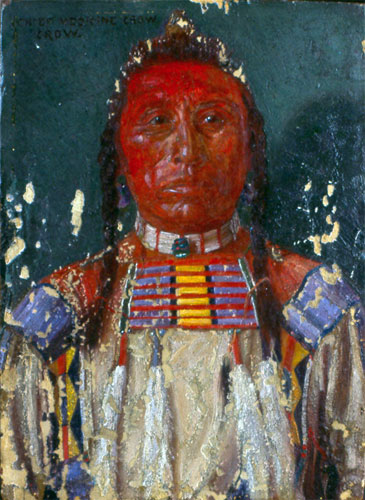
Some of the drawings by Medicine Crow mentioned by Burbank in his report:
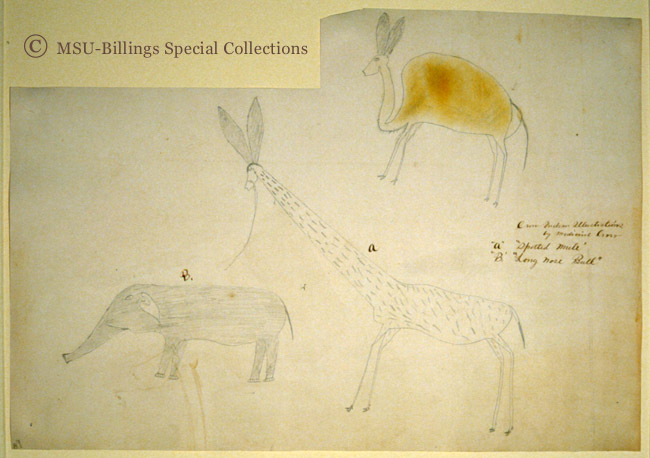
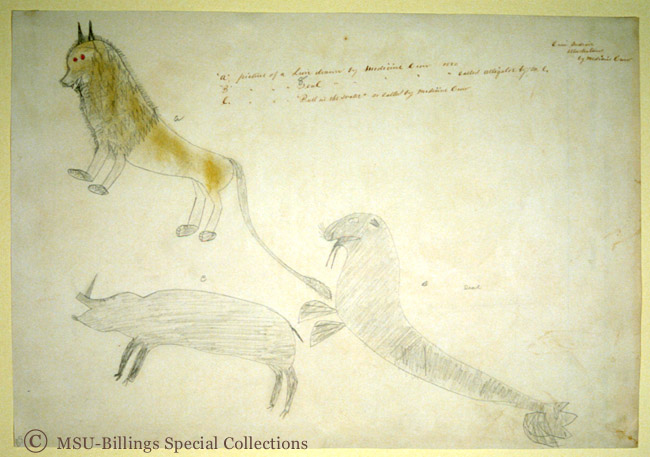
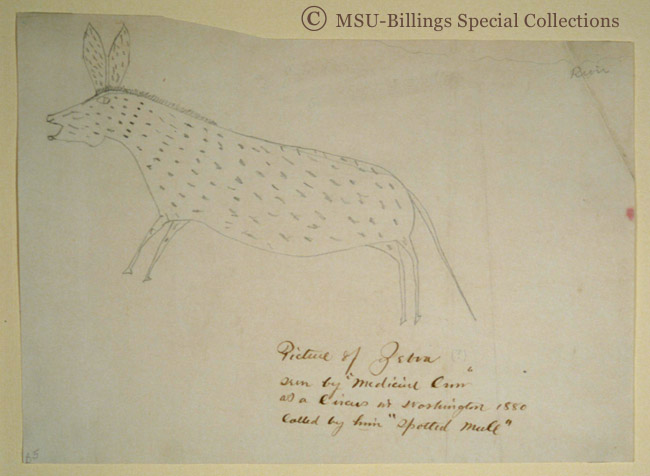
— Jinlian

Other ledger drawings by Medicine Crow:
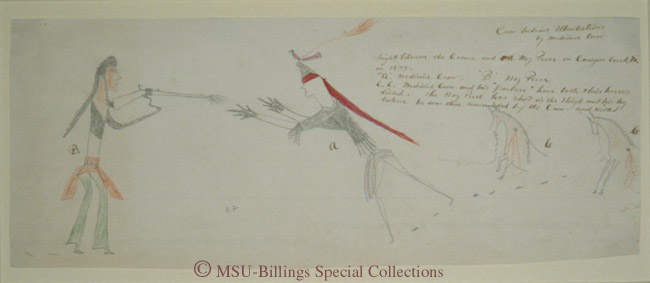
Medicine Crow counting coup on a Nez Perce.
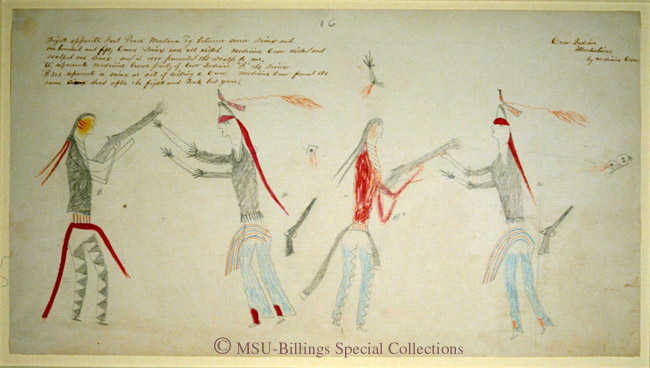
Medicine Crow killing seven Lakotas and scalping them.
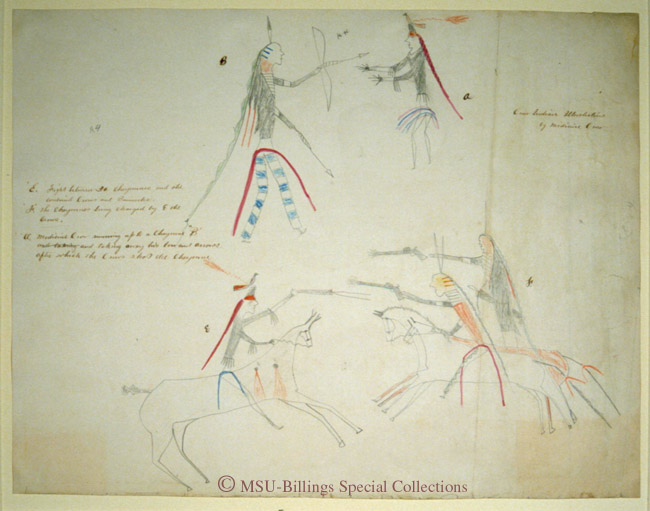
Fighting between Cheyennes and combined forces of Crow and Bannocks: Medicine Crow snatching bow and arrows from a Cheyenne and then shooting him.
— Jinlian

Another portrait of Medicine Crow:
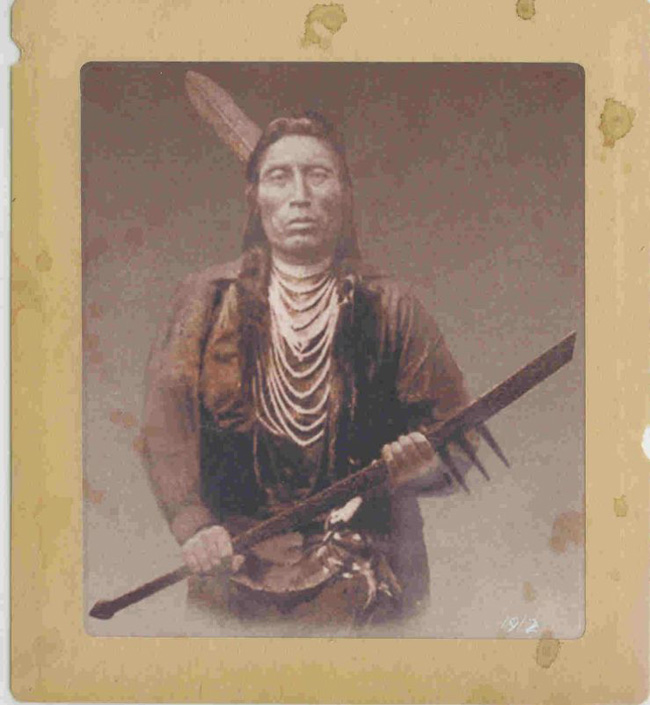
Washington D.C., 1913, left to right, Medicine Crow, White Man Runs Him, Plenty Coups:
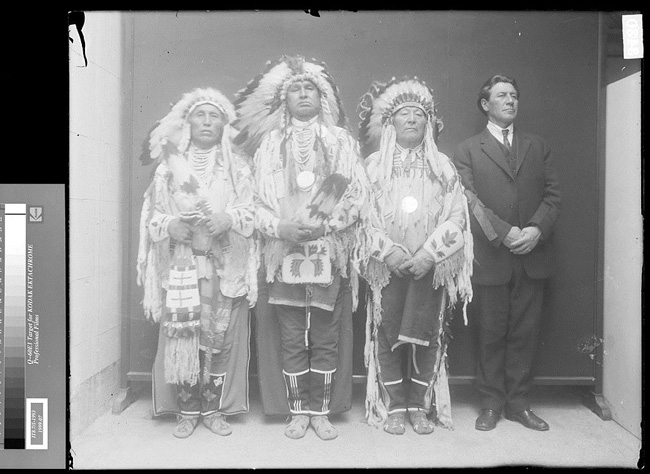
—Henri

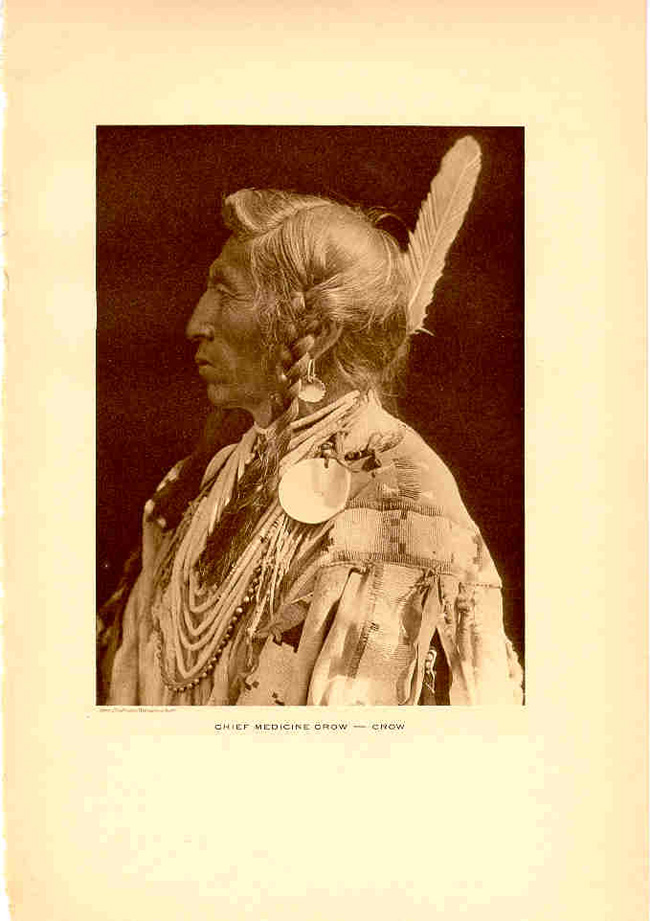
Medicine Crow's portrait from The Vanishing Race (Wanamaker, 1913).
— Jinlian

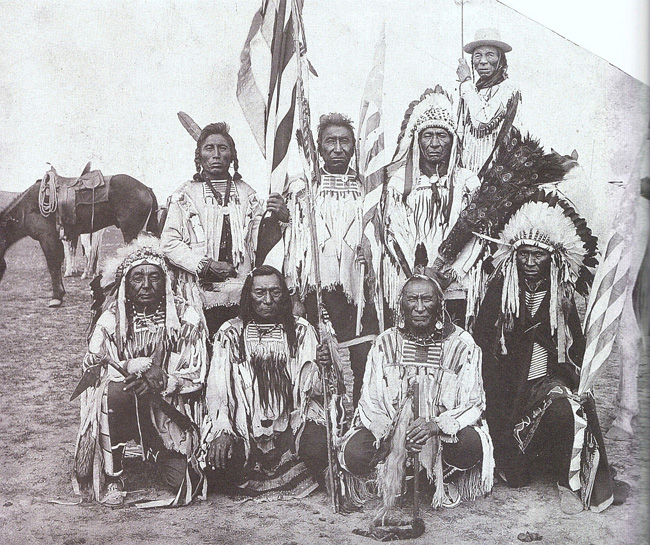
Group photo, early 1900s. Medicine Crow stands first from the left.
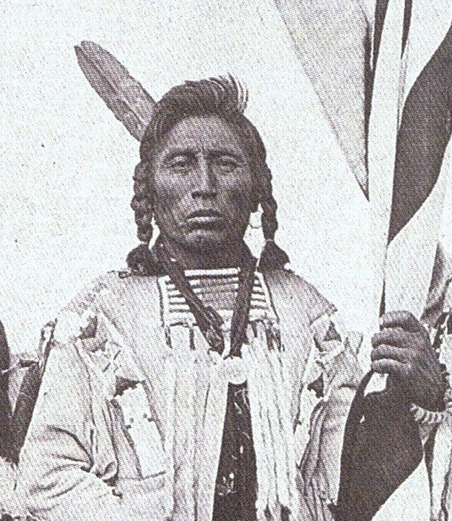
Close-up of Medicine Crow.
—Henri

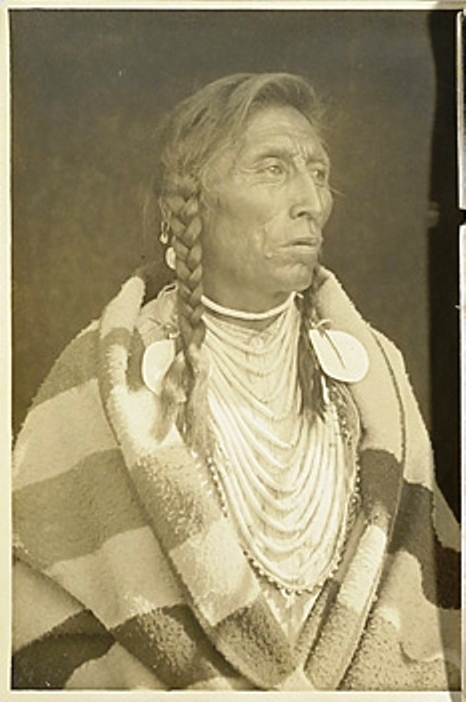
Fred Miller's portrait of Medicine Crow (about 1910). The Wanamaker postcard was obviously done from this photograph.
— Jinlian

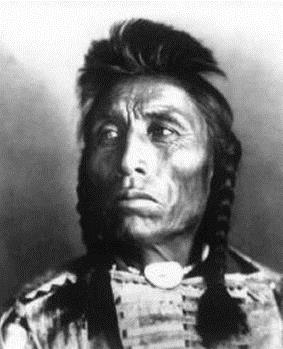
Another portrait of Medicine Crow, probably by Throssel.
— Jeroen

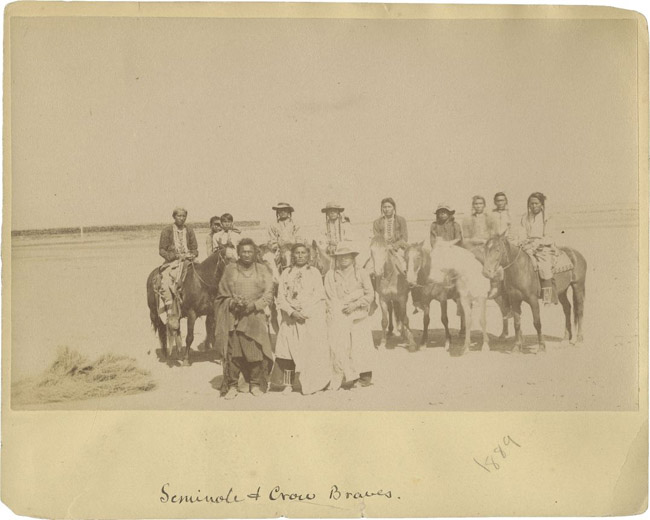
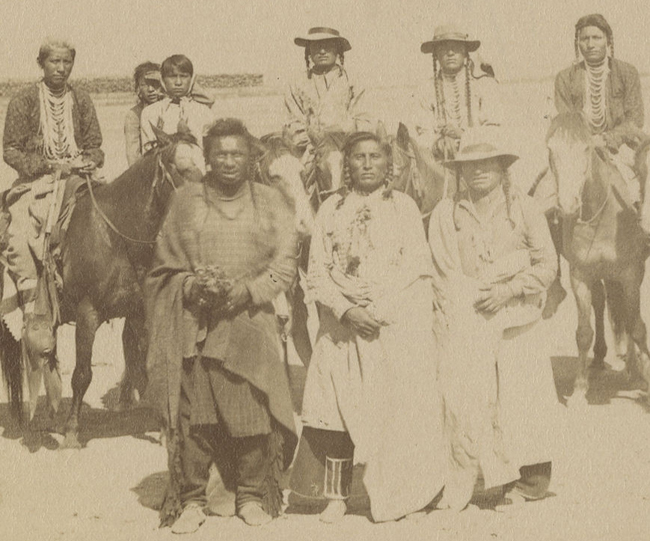
An 1889 photograph - Medicine Crow stands in the middle.
—Henri

In the above image, to Medicine Crow's right is his uncle and step-father, Bull Goes Hunting. It was taken around 1899 near Lodge Grass, Montana. Is it a Locke photo?
—Grahamew

Another group photo. Medicine Crow sits in the middle, back row, third from the right.
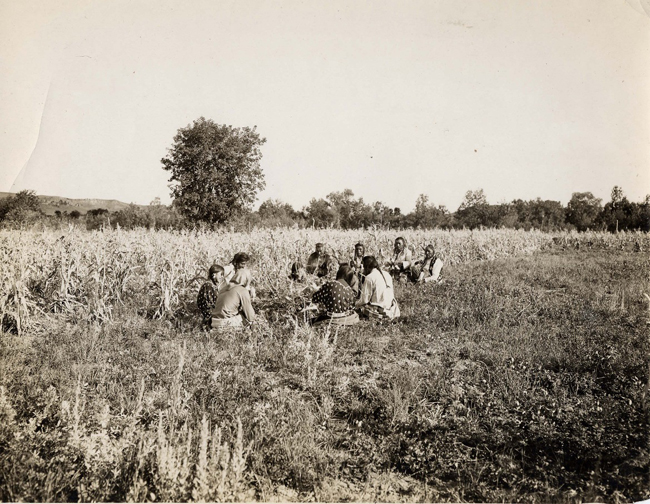
—Henri

Another Medicine Crow portrait, taken in 1908 near Lodge Grass.
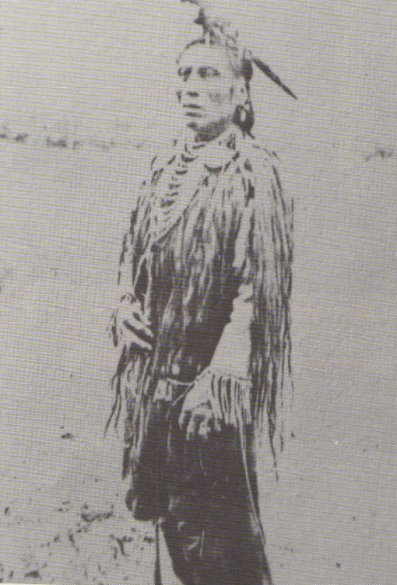
— Jeroen

Other images of Medicine Crow:
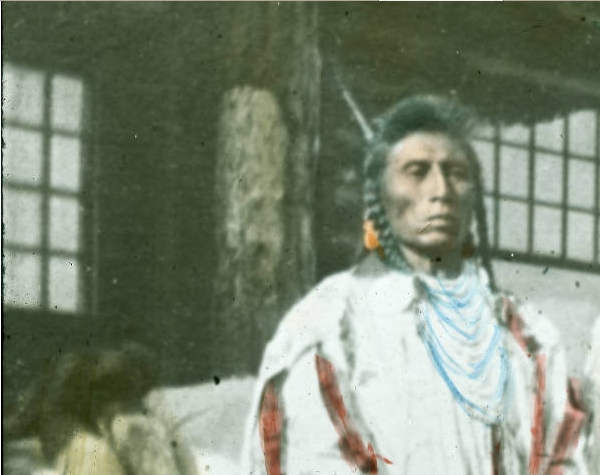
Detail from a group photo (early 1900s).
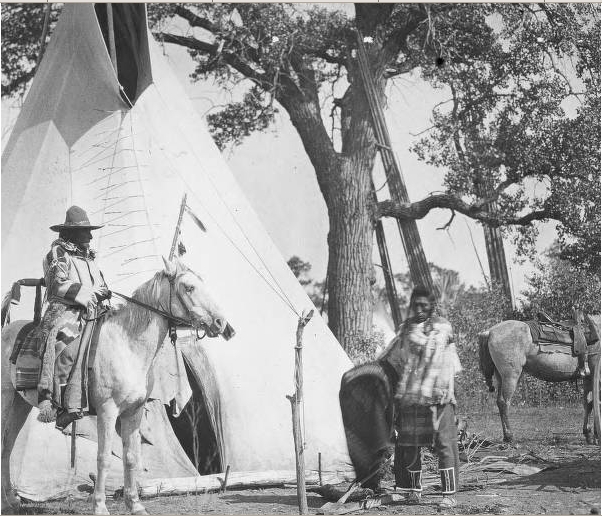
Medicine Crow (right) and an unnamed friend (Two Leggings?) near a tipi, early 1900s.
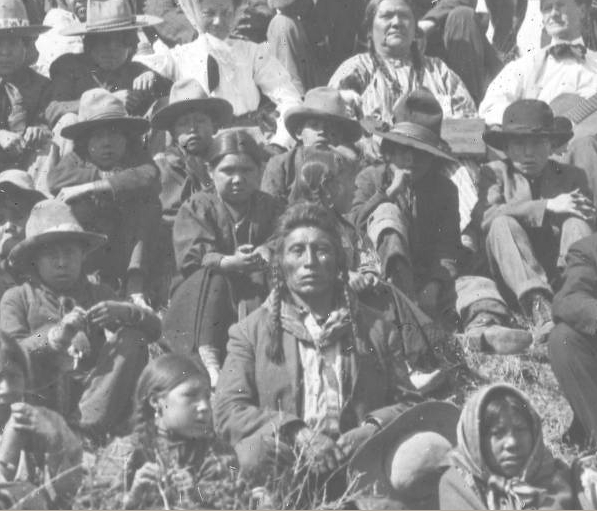
Close-up from a group photo (early 1900s).
— Jinlian

The picture of Medicine Crow and a friend near a tipi posted above is mirrored as can be seen by the lacing pins in the tipis which usually are pushed in from the right (most Indians were right-handed).
— Tipifan
|